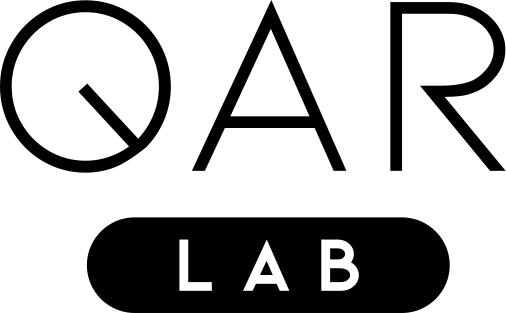Paper
Solving Large Steiner Tree Problems in Graphs for Cost-Efficient Fiber-To-The-Home Network Expansion
Tobias Müller, Kyrill Schmid, Daniëlle Schuman, Thomas Gabor, Markus Friedrich, Marc Geitz
Abstract
The expansion of Fiber-To-The-Home (FTTH) networks creates high costs due to expensive excavation procedures. Optimizing the planning process and minimizing the cost of the earth excavation work therefore lead to large savings. Mathematically, the FTTH network problem can be described as a minimum Steiner Tree problem. Even though the Steiner Tree problem has already been investigated intensively in the last decades, it might be further optimized with the help of new computing paradigms and emerging approaches. This work studies upcoming technologies, such as Quantum Annealing, Simulated Annealing and nature-inspired methods like Evolutionary Algorithms or slime-mold-based optimization. Additionally, we investigate partitioning and simplifying methods. Evaluated on several real-life problem instances, we could outperform a traditional, widely-used baseline (NetworkX Approximate Solver) on most of the domains. Prior partitioning of the initial graph and the presented slime-mold-based approach were especially valuable for a cost-efficient approximation. Quantum Annealing seems promising, but was limited by the number of available qubits.
Optimizing a Quantum Key Distribution Network using Quantum Annealing
Abstract
Ausgehend vom Use Case 5.2 (PlanQK) wird in Zusammenarbeit mit der deutschen Telekom ein reales, aber anonymisiertes Netzwerk optimiert. Die vorliegende Arbeit umfasst den im Use Case (UC) geforderten quantentechnologischen Ansatz. Die anvisierten Optimierungsziele des UC für dieses Netzwerk bestehen darin, sowohl die Anzahl der Quantum Key Distribution (QKD) Systeme zu minimieren, wie auch die maximale Schlüsselübertragung mittels Quantum Annealing sicherzustellen. Dabei werden die Fälle Zertifikatsaustausch (1->N) und Any-to-Any (N->N) berücksichtigt. Der Zertifikatsaustausch wird durch eine angepasste MST-QUBO (Minimum Spanning Tree) mit fester Wurzel modelliert. Der Any-to-Any Fall wird durch eine selbstkonstruierte QUBO abgedeckt. Hierbei liegt das Augenmerk, neben den Optimierungszielen, auf eine kleinstmögliche Anzahl an Qubits, wie auch auf ein minimales Vorwissen bzgl. des Netzwerks. Darüber hinaus beinhalten beide Fälle aus Sicherheitsgründen die Möglichkeit einer eingeschränkten bzw. größtmöglichen Redundanz zu gewährleisten. Die Redundanz wird ebenfalls durch eine QUBO formuliert. Schlussendlich werden alle QUBO’s mit Hybrid- und QPU-Solver (Quantum Processing Unit) der Firma D-Wave gelöst, um belastbare Ergebnisse zu generieren.
A Flexible Pipeline for the Optimization of Construction Trees
M. Friedrich, C. Roch, S. Feld, C. Hahn, and P. Fayolle
Abstract
CSG trees are an intuitive, yet powerful technique for the representation of geometry using a combination of Boolean set-operations and geometric primitives. In general, there exists an infinite number of trees all describing the same 3D solid. However, some trees are optimal regarding the number of used operations, their shape or other attributes, like their suitability for intuitive, human-controlled editing. In this paper, we present a systematic comparison of newly developed and existing tree optimization methods and propose a flexible processing pipeline with a focus on tree editability. The pipeline uses a redundancy removal and decomposition stage for complexity reduction and different (meta-)heuristics for remaining tree optimization. We also introduce a new quantitative measure for CSG tree editability and show how it can be used as a constraint in the optimization process.
28th International Conference on Computer Graphics, Visualization and Computer Vision (WSCG)
The UQ Platform: A Unified Approach To Quantum Annealing
Abstract
Quantum Annealing is an algorithm for solving instances of quadratic unconstrained binary optimization (QUBO) that is implemented in hardware utilizing quantum effects to quickly find approximate solutions. However, QUBO can obviously also be solved by any classical optimization technique, for which various implementations exist. The UQ platform provides a unified interface to various means of solving QUBO that allows for a seamless switch between classical and quantum methods while implementing features such as load and user management.
IEEE 5th International Conference on Computer and Communication Systems (ICCCS 2020)
A Quantum Annealing Algorithm for Finding Pure Nash Equilibria in Graphical Games
Abstract
We introduce Q-Nash, a quantum annealing algorithm for the NP-complete problem of finding pure Nash equilibria in graphical games. The algorithm consists of two phases. The first phase determines all combinations of best response strategies for each player using classical computation. The second phase finds pure Nash equilibria using a quantum annealing device by mapping the computed combinations to a quadratic unconstrained binary optimization formulation based on the Set Cover problem. We empirically evaluate Q-Nash on D-Wave’s Quantum Annealer 2000Q using different graphical game topologies. The results with respect to solution quality and computing time are compared to a Brute Force algorithm and the Iterated Best Response heuristic.
Published in 20th International Conference on Computational Science (ICCS 2020), 2020, p. 12. doi:10.1007/978-3-030-50433-5_38
Approximating Archetypal Analysis Using Quantum Annealing
S. Feld, C. Roch, K. Geirhos, and T. Gabor
Abstract
Archetypes are those extreme values of a data set that can jointly represent all other data points. They often have descriptive meanings and can thus contribute to the understanding of the data. Such archetypes are identified using archetypal analysis and all data points are represented as convex combinations thereof. In this work, archetypal analysis is linked with quantum annealing. For both steps, i.e. the determination of archetypes and the assignment of data points, we derive a QUBO formulation which is solved on D-Wave’s 2000Q Quantum Annealer. For selected data sets, called toy and iris, our quantum annealing-based approach can achieve similar results to the original R-package archetypes.
28th European Symposium on Artificial Neural Networks, Computational Intelligence and Machine Learning (ESANN 2020)
The Dynamic Time Warping Distance Measure as Q U BO Formulation
S. Feld, C. Roch, T. Gabor, M. To, and C. Linnhoff-Popien
Abstract
Dynamic Time Warping (DTW) is a representative of a distance measure that is able to calculate the distance between two time series. It is often used for the recognition of handwriting or spoken language. The metaheuristic Quantum Annealing (QA) can be used to solve combinatorial optimization problems. Similar to Simulated Annealing it seeks to find a global minimum of a target function. In order to use specialized QA hardware, the problem to be optimized needs to be translated into a Quadratic Unconstrained Binary Optimization (QUBO) problem. With this paper we investigate whether it is possible to transfer the DTW distance measure into a QUBO formulation. The motivation behind is the hope on an accelerated execution once the QA hardware scales up and the aspiration of gaining benefits due to quantum effects that are not given in the classical calculation. In principle, we find that it is possible to transform DTW into a QUBO formulation suitable for executing on QA hardware. Also, the algorithm returns not only the minimum total distance between two sequences, but also the corresponding warping path. However, there are several difficulties that make a manual intervention necessary.
IEEE 5th International Conference on Computer and Communication Systems (ICCCS 2020)
Insights on Training Neural Networks for QUBO Tasks
T. Gabor, S. Feld, H. Safi, T. Phan, and C. Linnhoff-Popien
Abstract
Current hardware limitations restrict the potential when solving quadratic unconstrained binary optimization (QUBO) problems via the quantum approximate optimization algorithm (QAOA) or quantum annealing (QA). Thus, we consider training neural networks in this context. We first discuss QUBO problems that originate from translated instances of the traveling salesman problem (TSP): Analyzing this representation via autoencoders shows that there is way more information included than necessary to solve the original TSP. Then we show that neural networks can be used to solve TSP instances from both QUBO input and autoencoders‘ hiddenstate representation. We finally generalize the approach and successfully train neural networks to solve arbitrary QUBO problems, sketching means to use neuromorphic hardware as a simulator or an additional co-processor for quantum computing.
1st International Workshop on Quantum Software Engineering (QSE at ICSE)
The Holy Grail of Quantum Artificial Intelligence: Challenges in Accelerating the Machine Learning Pipeline
T. Gabor, L. Suenkel, F. Ritz, L. Belzner, C. Roch, S. Feld, and C. Linnhoff-Popien
Abstract
We discuss the synergetic connection between quantum computing and artificial intelligence. After surveying current approaches to quantum artificial intelligence and relating them to a formal model for machine learning processes, we deduce four major challenges for the future of quantum artificial intelligence: (i) Replace iterative training with faster quantum algorithms, (ii) distill the experience of larger amounts of data into the training process, (iii) allow quantum and classical components to be easily combined and exchanged, and (iv) build tools to thoroughly analyze whether observed benefits really stem from quantum properties of the algorithm.
1st International Workshop on Quantum Software Engineering (QSE at ICSE)

